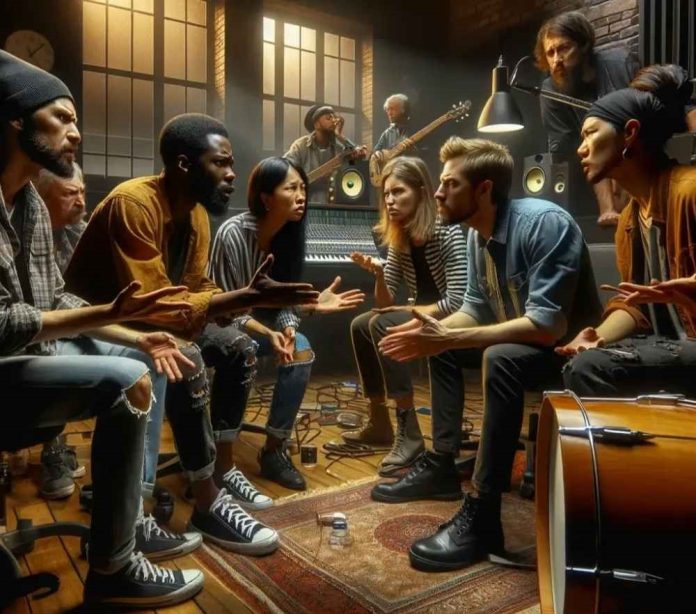
Collaboration has always been a driving force in the music industry, but in today’s hyper-competitive landscape, building the right partnerships can make all the difference. The most successful creative partnerships don’t happen by chance. Instead, they are forged through mutual respect, clear goals, and shared values. Whether you’re an emerging artist or an industry veteran, forming strategic, creative alliances can open doors to new opportunities, innovation, and career longevity.
This article will offer practical advice on how to build creative partnerships, highlighting approaches that have proven effective in today’s rapidly evolving industry.
1. Identify Complementary Strengths
One of the keys to a successful partnership is recognizing the complementary strengths between collaborators. Before approaching a potential partner, assess what you bring to the table and what the other person offers. A great partnership is one where each party contributes unique skills or perspectives that complement each other. For example, if you’re a songwriter with a talent for lyrics, consider collaborating with a producer known for innovative sound design.
Look at legendary collaborations such as Elton John and Bernie Taupin, where one focused on the music and the other on the lyrics. The synergy between their distinct roles allowed them to craft hits that resonated across decades. Similarly, in today’s industry, understanding your strengths and pairing them with someone whose talents enhance or complete your own is crucial for creating memorable, successful work.
2. Establish Clear Communication
Effective communication is the backbone of any creative partnership. Before diving into a project, both parties should establish clear communication channels and agree on the goals and vision for the collaboration. Whether it’s setting expectations for timelines, sharing creative input, or navigating business decisions, transparency ensures that everyone is aligned and that misunderstandings are minimized.
Take the case of superproducer Max Martin, who has co-written hits with artists like Taylor Swift and The Weeknd. His success in part stems from his ability to communicate openly with the artists he collaborates with, ensuring that the song’s creative vision remains intact while incorporating the distinct styles of each artist.
3. Leverage Digital Platforms for Networking
In today’s music landscape, building partnerships isn’t limited to physical proximity. Platforms like SoundCloud, Instagram, TikTok, and even LinkedIn have become invaluable tools for artists seeking collaborations across the globe. These digital platforms allow musicians to showcase their work, connect with like-minded creators, and build relationships that can lead to fruitful collaborations.
Take the success story of Canadian artist Connor Price, who uses TikTok’s spinning globe challenge to choose random collaborators from different countries and genres. This creative and playful approach to networking has allowed him to expand his audience and work with a wide range of global talent, further enhancing his brand and reach.
4. Maintain Flexibility and Adaptability
While having a clear vision is essential, it’s equally important to remain flexible throughout the collaboration process. Creative partnerships often require compromises, especially when blending different styles or visions. Flexibility allows both partners to experiment, adapt, and ultimately create something that transcends individual expectations.
Look at how genre-defying collaborations like Run-D.M.C. and Aerosmith’s “Walk This Way” pushed the boundaries of both rock and hip-hop, creating a track that appealed to fans of both genres. Flexibility and a willingness to embrace the unexpected helped both acts achieve lasting success and reshape the music landscape.
5. Prioritize Long-Term Relationships
Building a successful partnership goes beyond a single project. Aim to foster long-term relationships with your collaborators. Consistency and trust developed over time can lead to more projects, greater creative freedom, and even business opportunities down the road.
Consider the longstanding collaboration between Drake and his producer Noah “40” Shebib. Their partnership, built on trust and mutual understanding, has led to numerous chart-topping hits and an evolving sound that continues to dominate the hip-hop and pop music scene. Long-term partnerships like these can bring stability and a deeper connection that transcends industry trends.
6. Understand the Business Side
Creative partnerships don’t only require artistic compatibility; they also demand a strong understanding of the business side. This includes negotiating splits, understanding intellectual property rights, and ensuring all parties are fairly compensated for their contributions. Many partnerships fall apart due to financial disputes, so it’s critical to clarify terms before starting a project.
Artists like Beyoncé and Jay-Z have demonstrated the importance of aligning creatively and financially. They built a collaborative empire that spans not only music but also business ventures. Clear contracts and mutually beneficial agreements ensure that both artists and producers can continue to collaborate without issues arising.
Conclusion: Building Lasting, Creative Partnerships
Music Industry Weekly understands that in today’s fast-paced and competitive music industry, forming creative partnerships can open doors to new sounds, bigger audiences, and sustained success. Whether you’re looking to collaborate locally or internationally, the principles remain the same: clear communication, complementary strengths, and a mutual commitment to the partnership’s success. By fostering relationships built on trust and a shared creative vision, artists can position themselves for lasting success.







